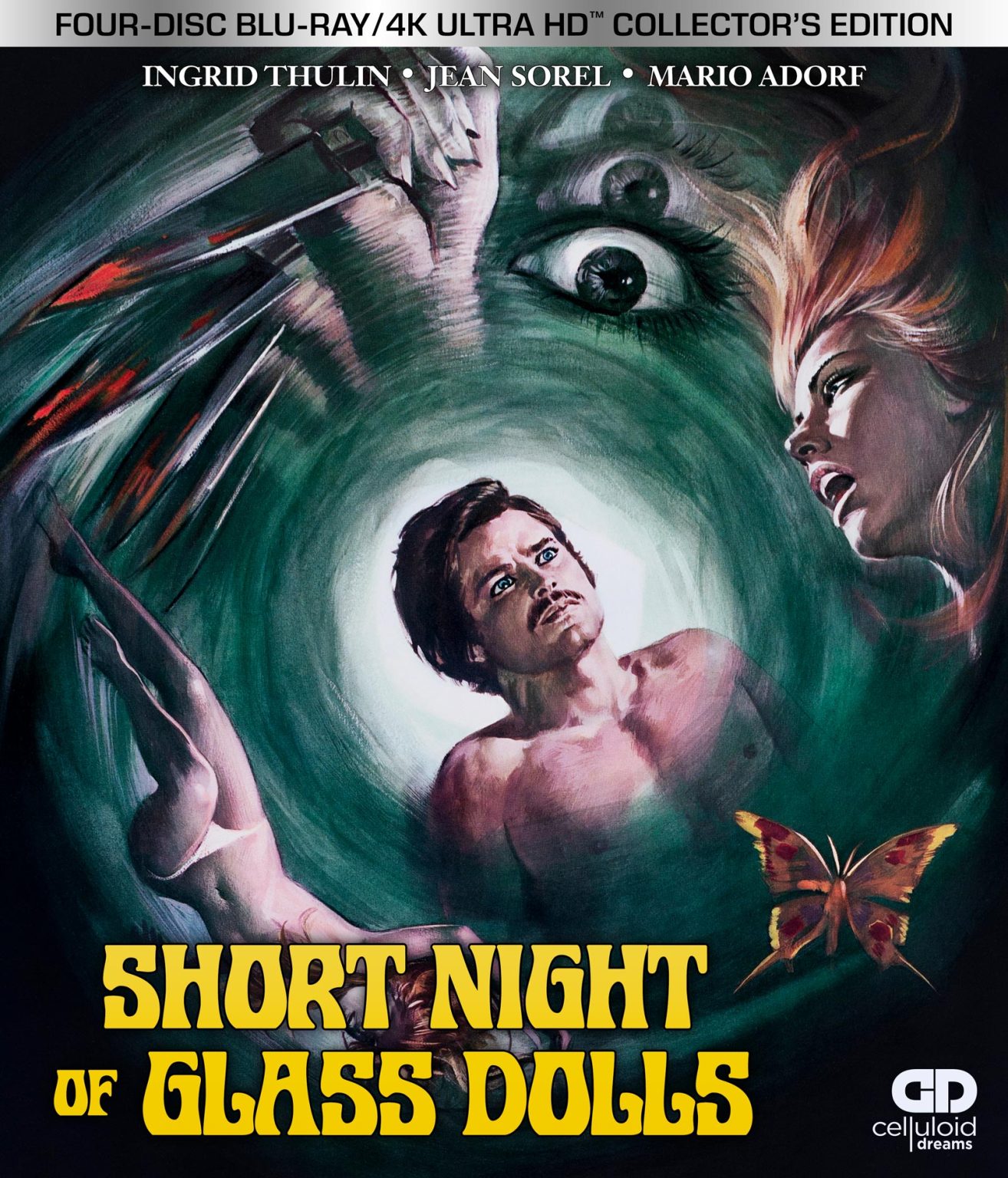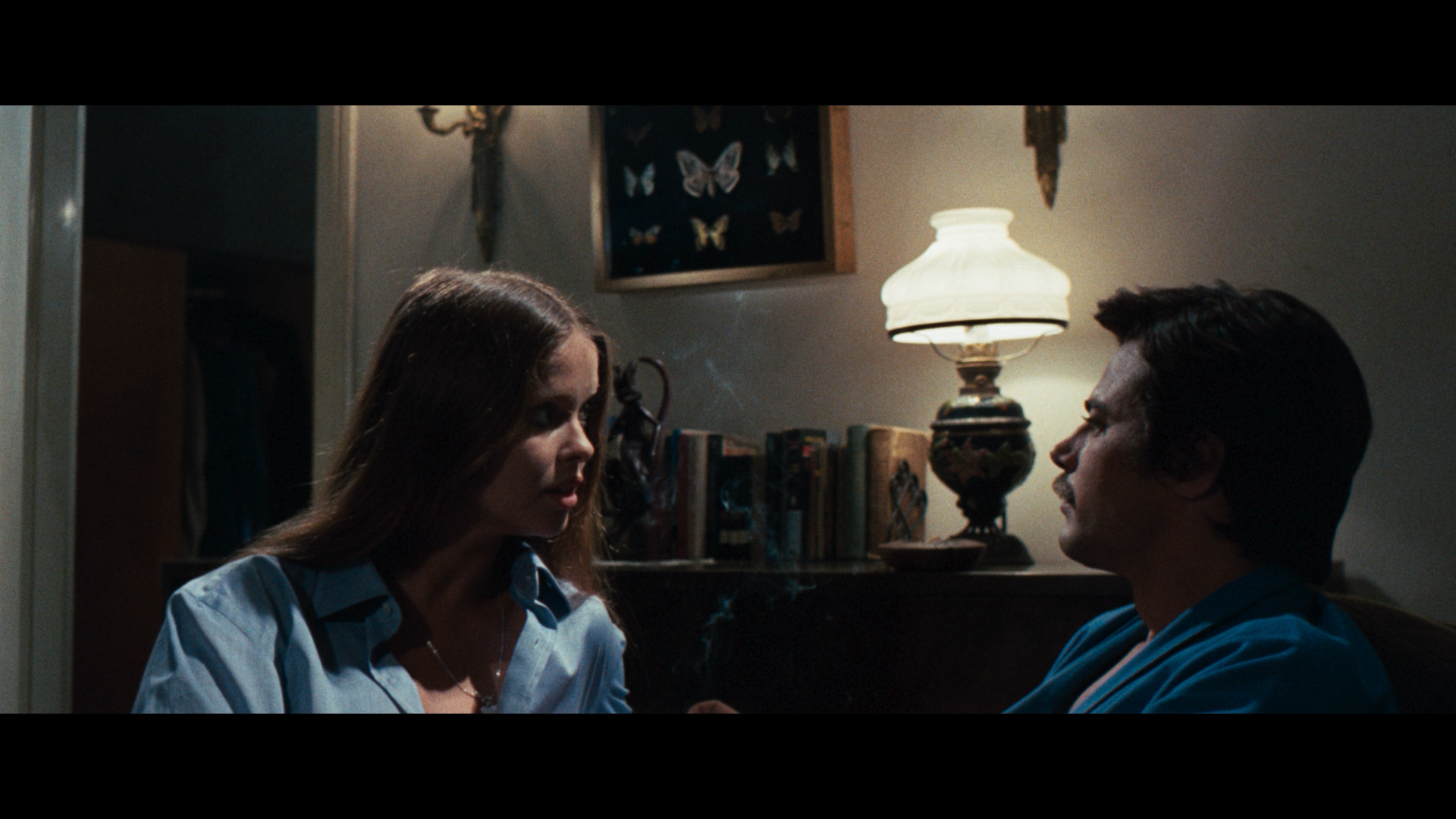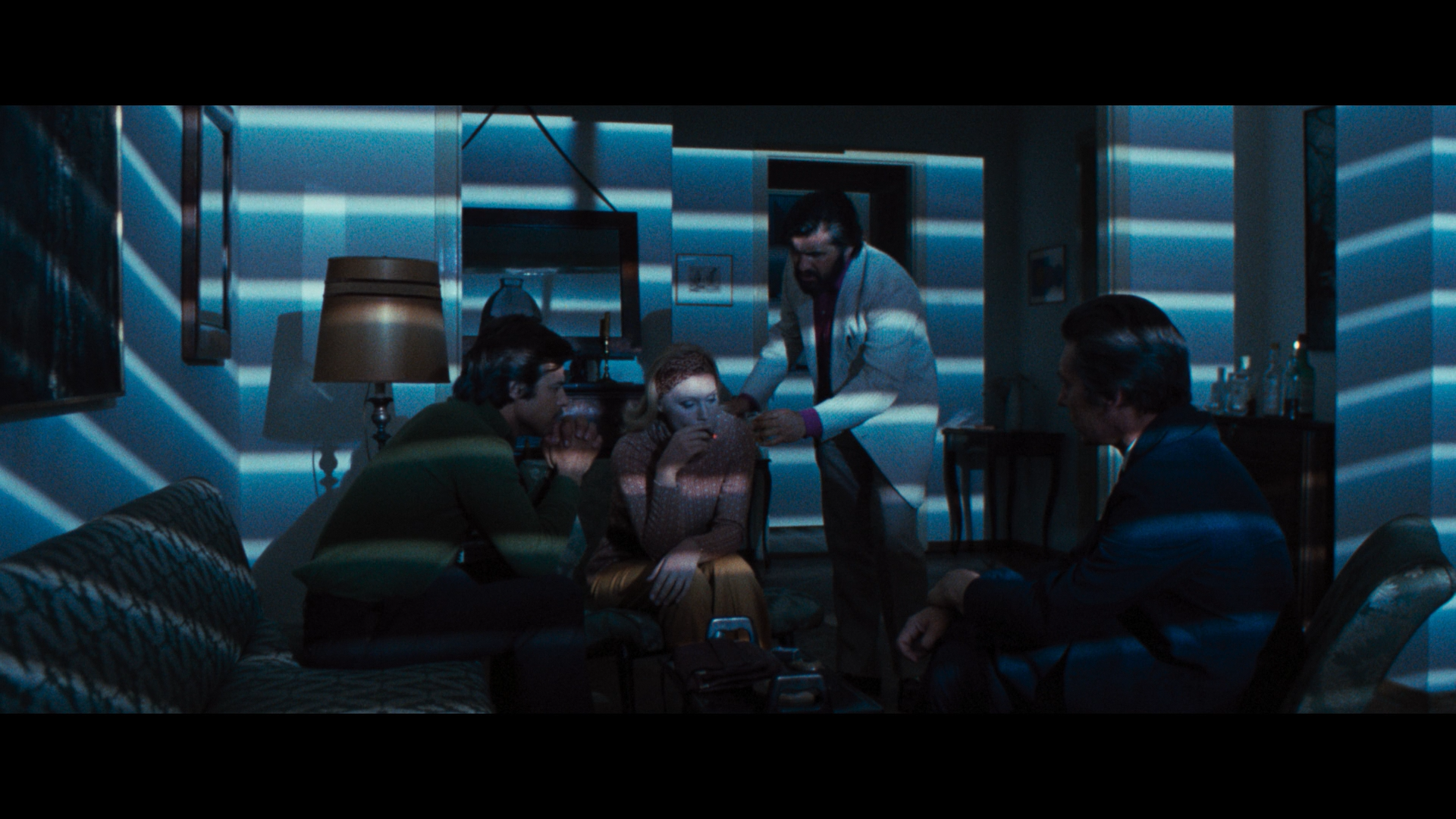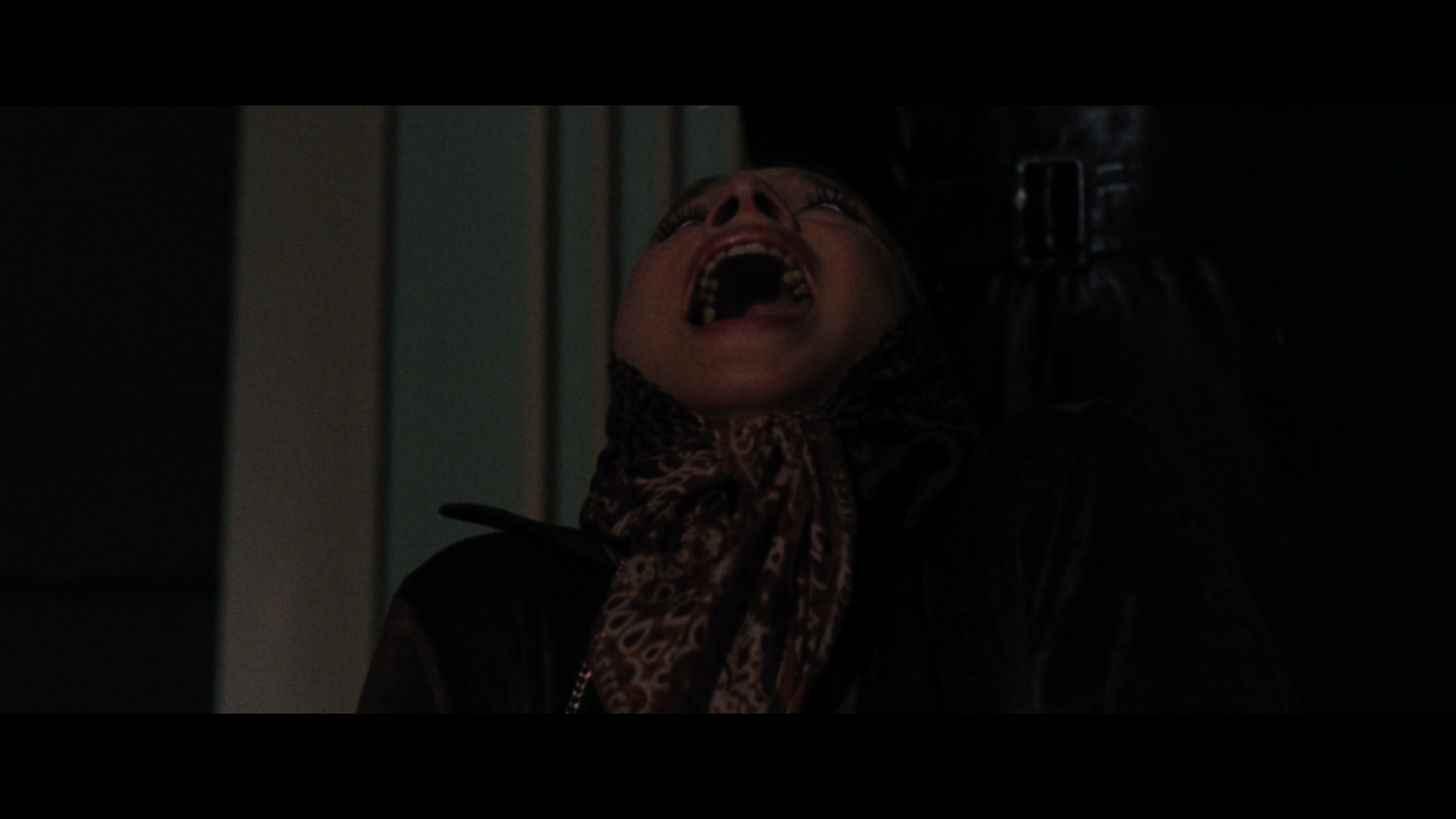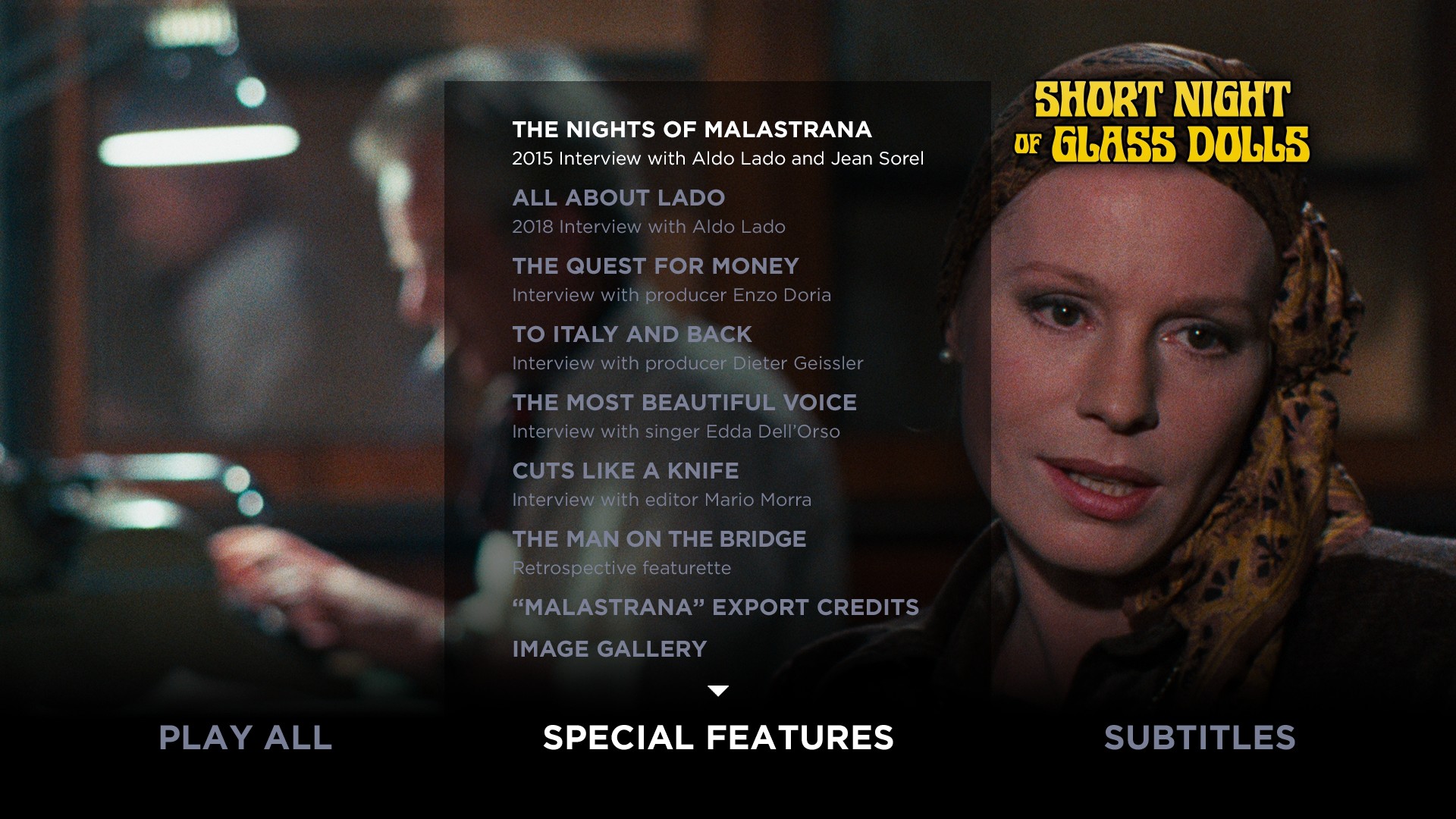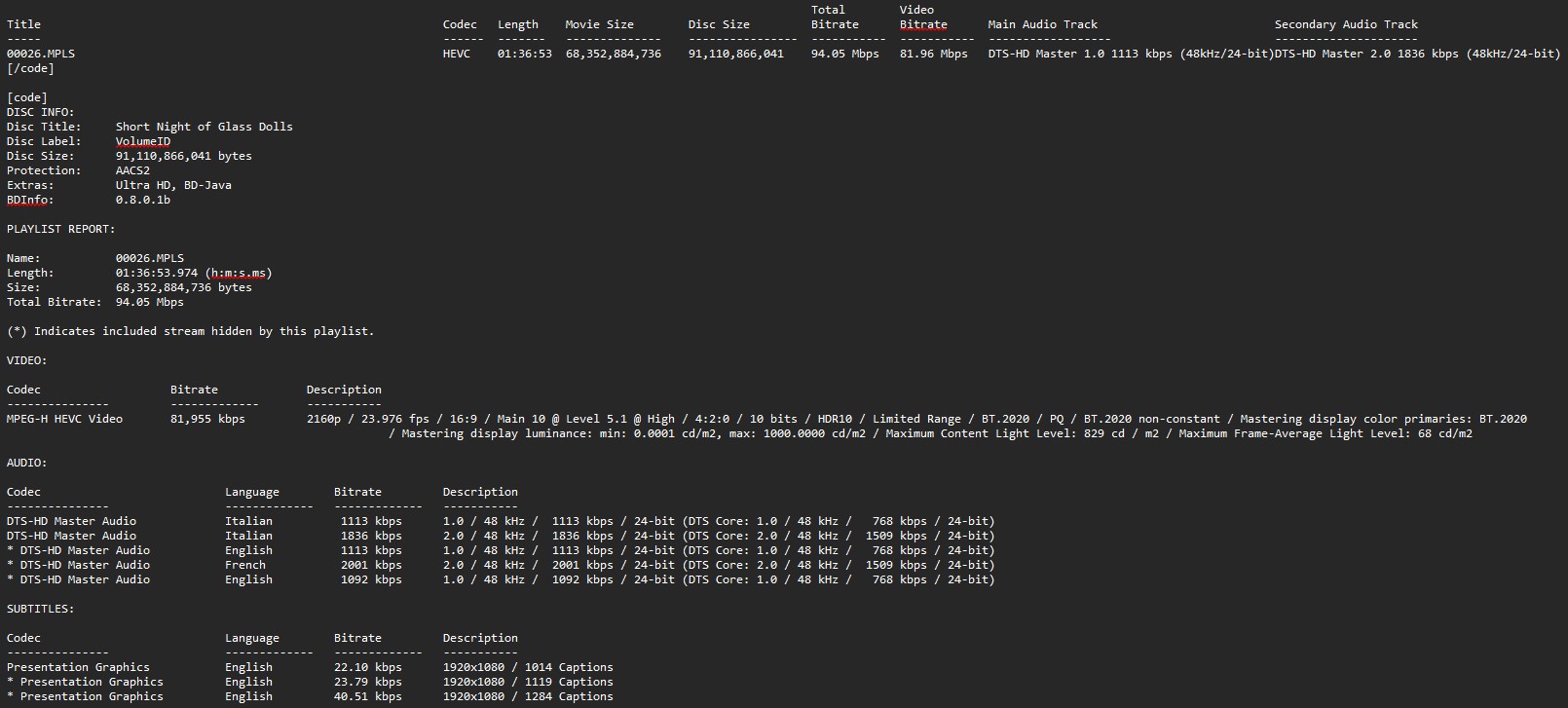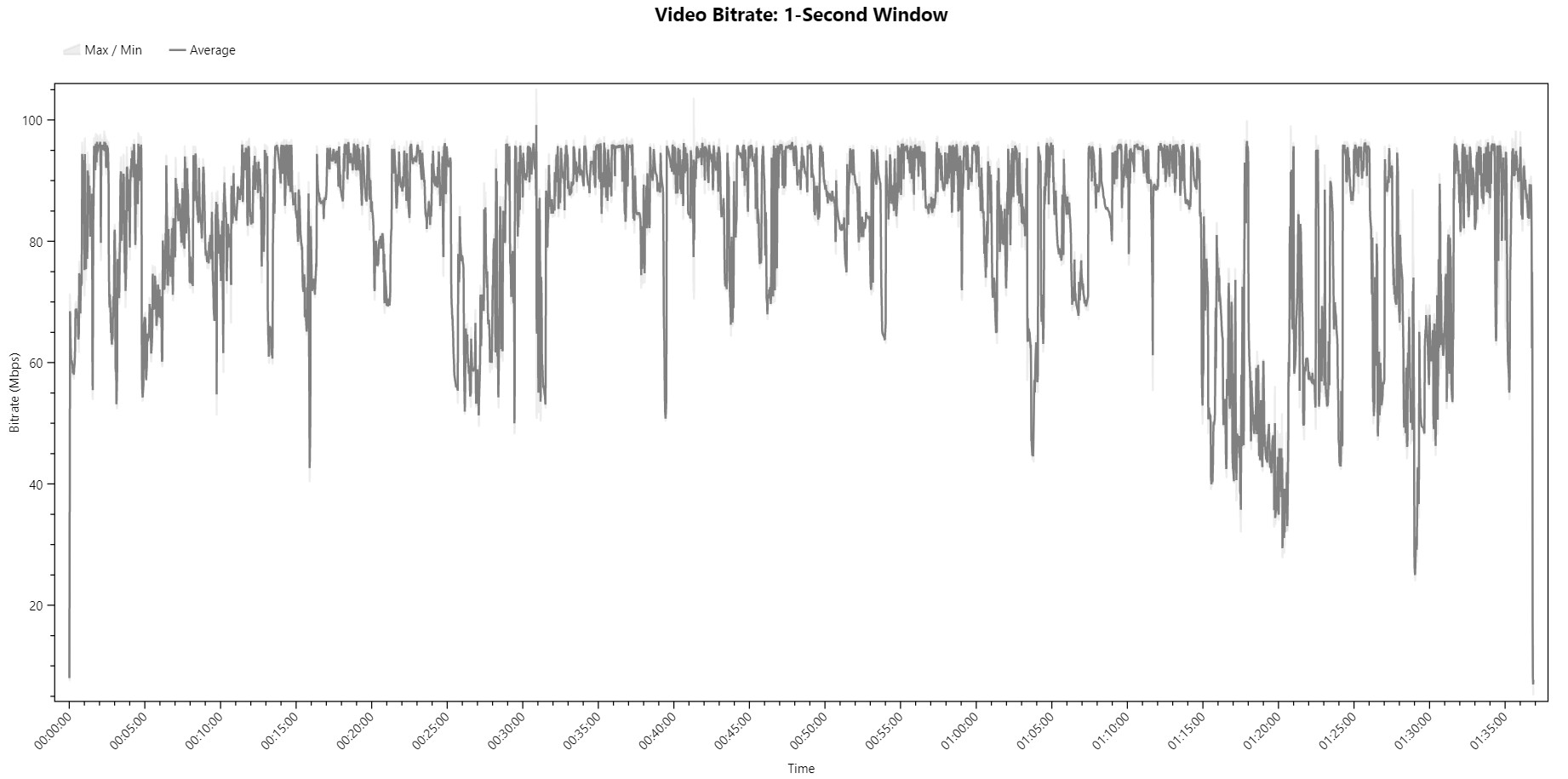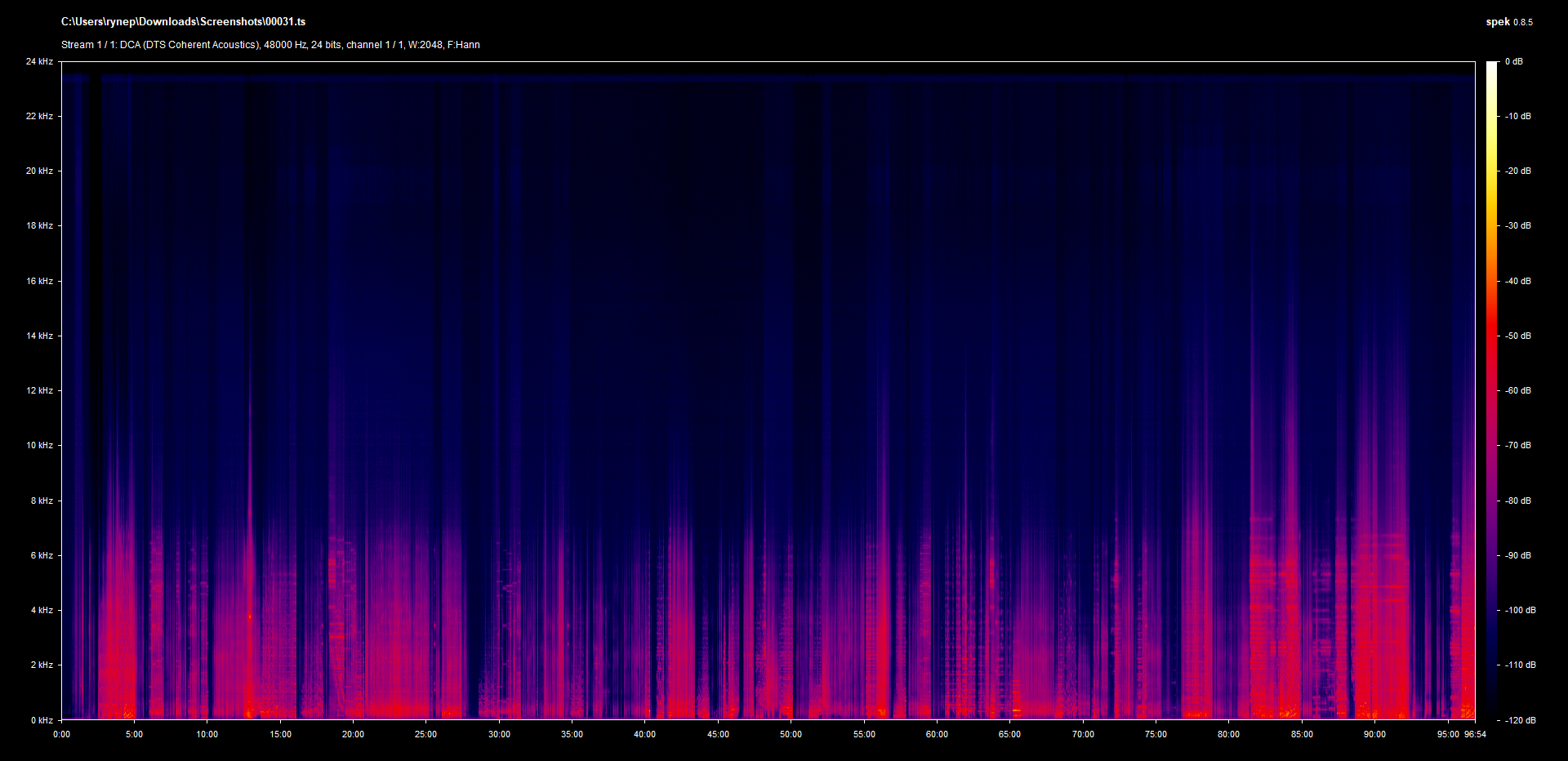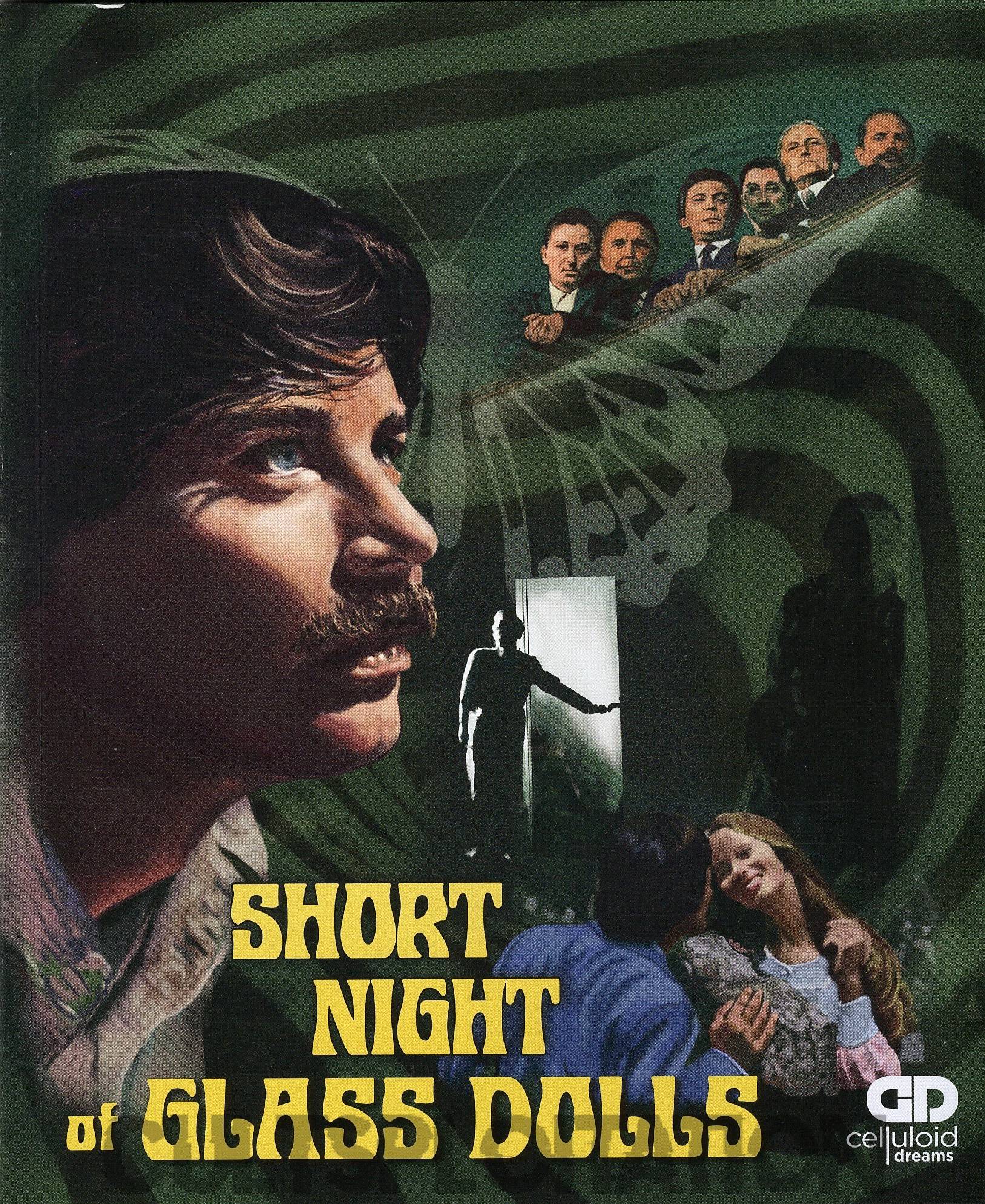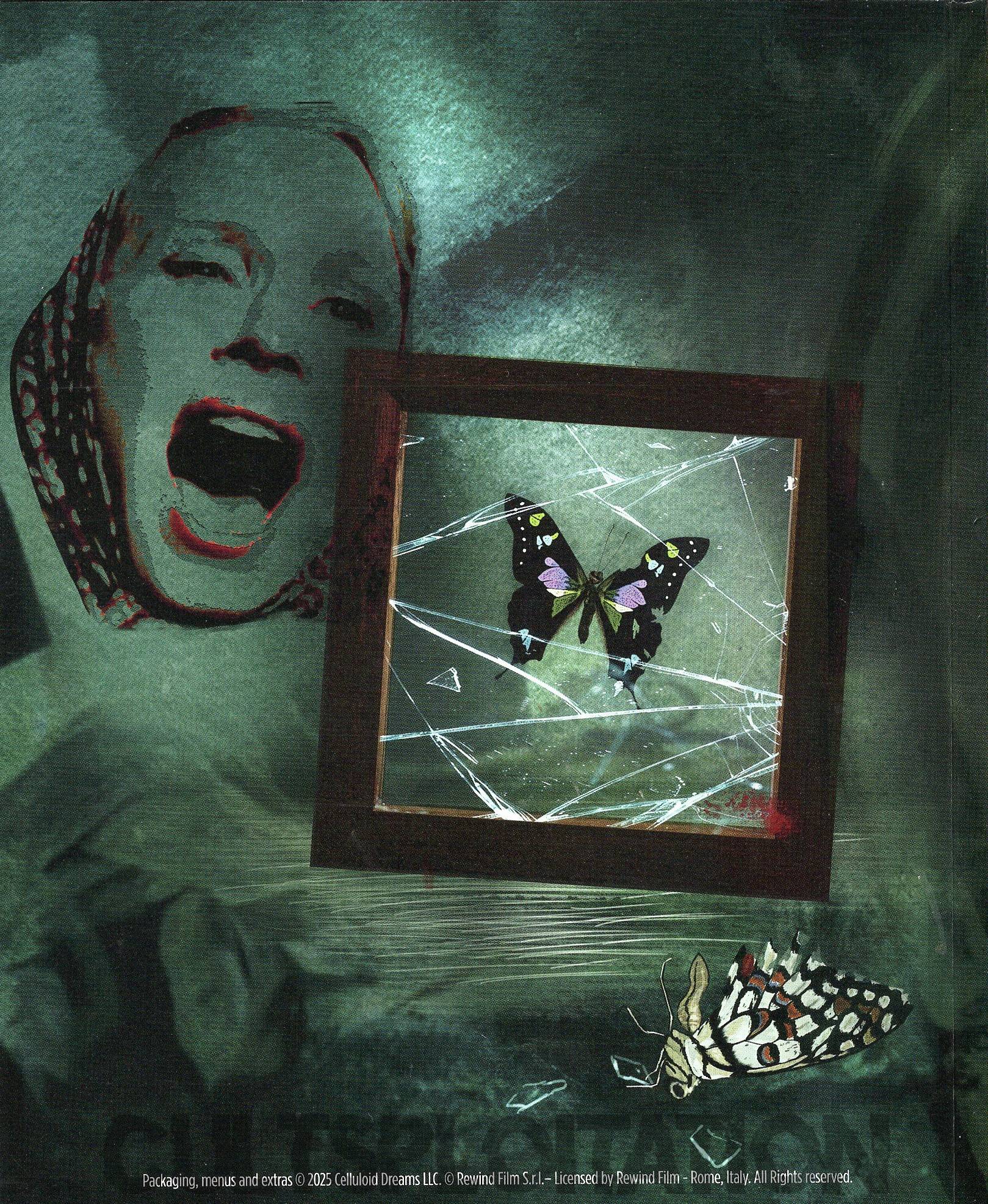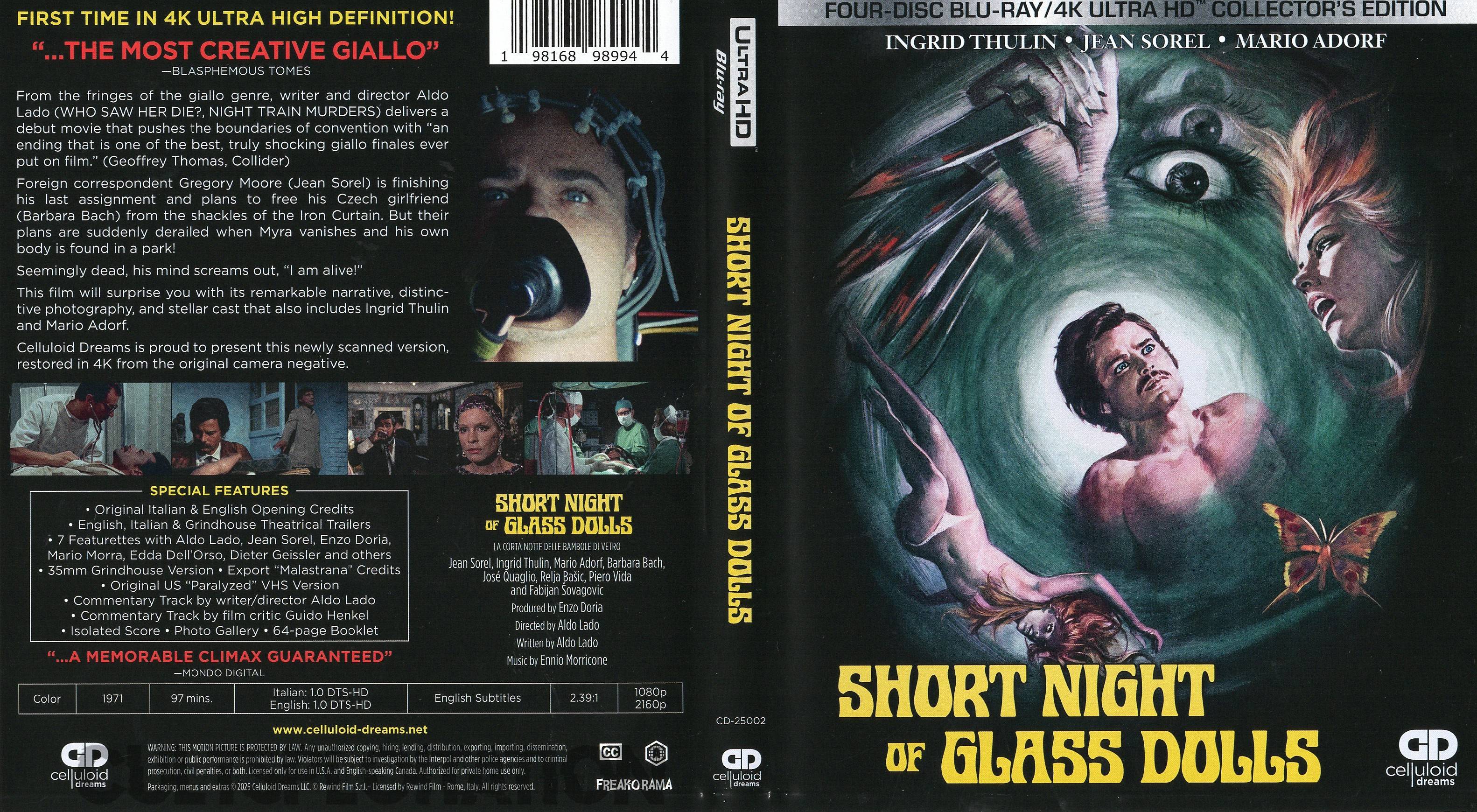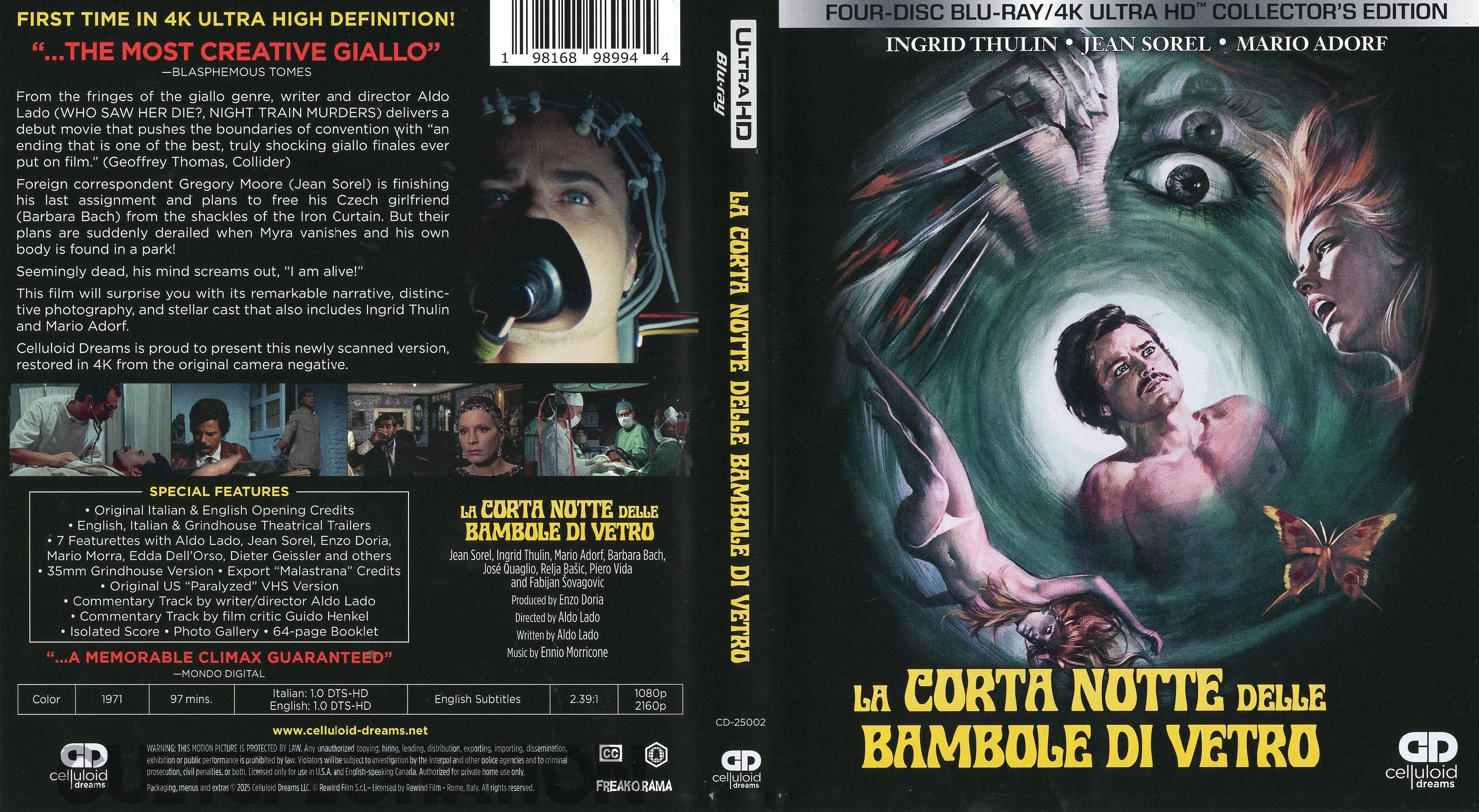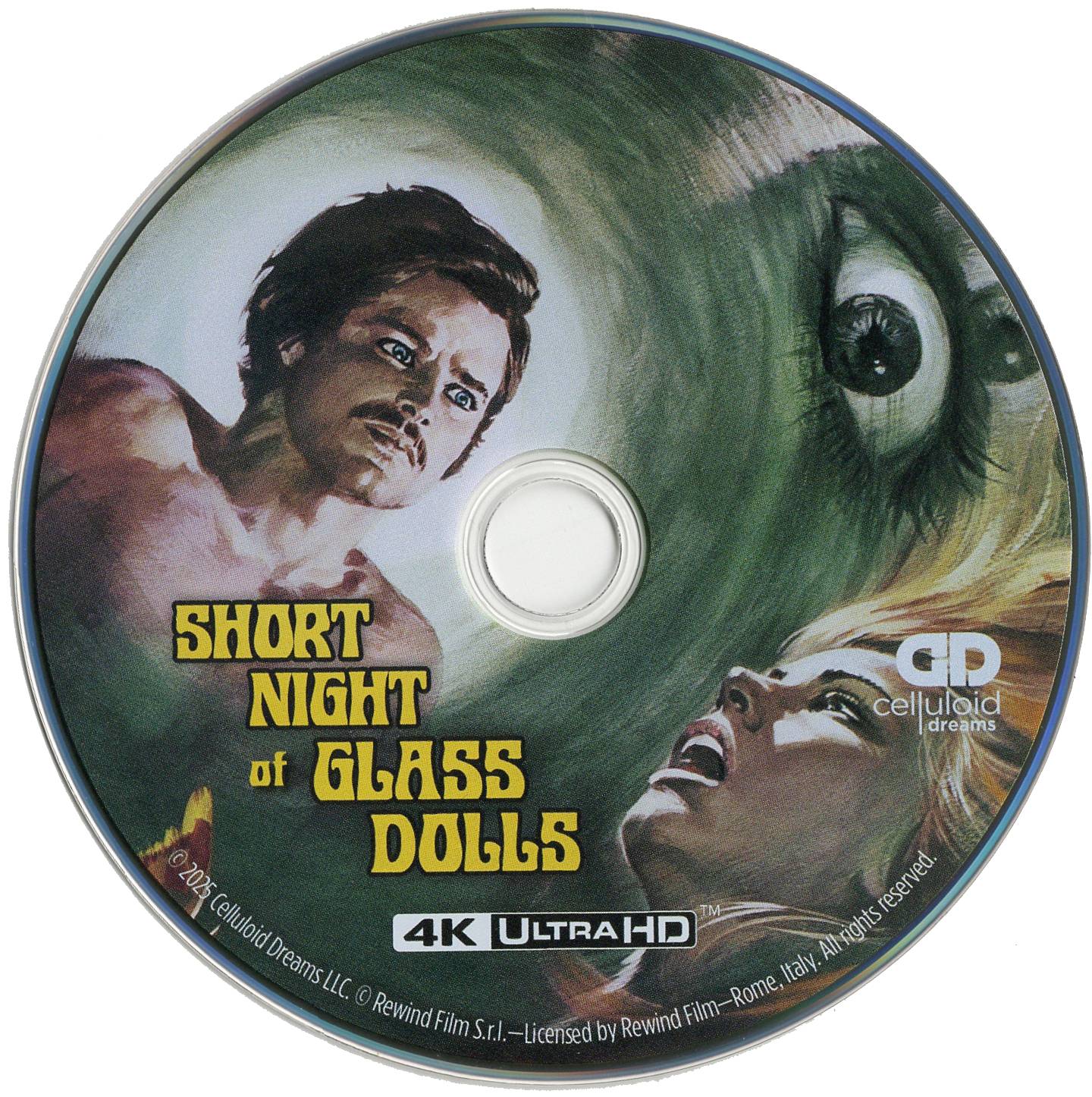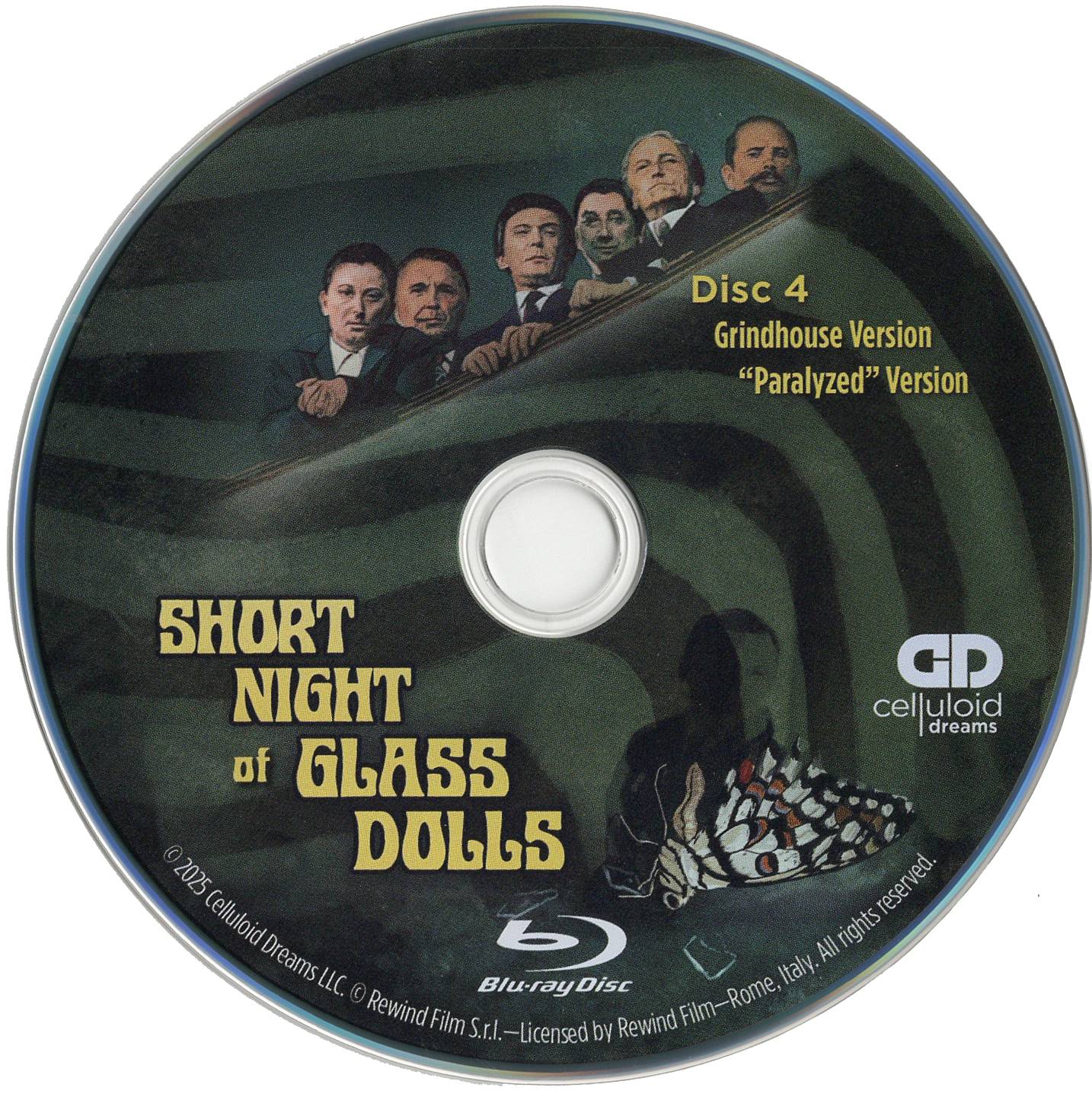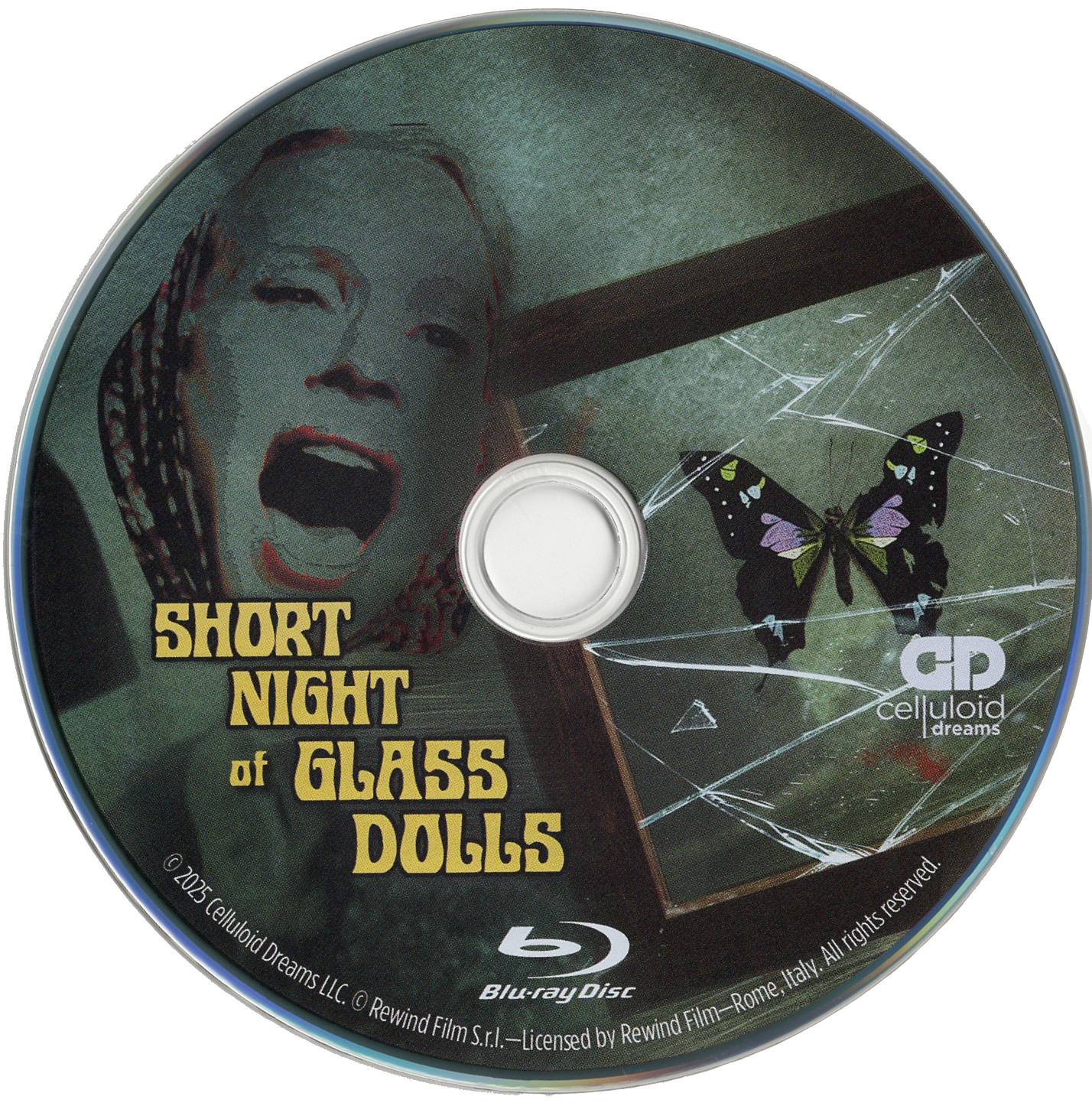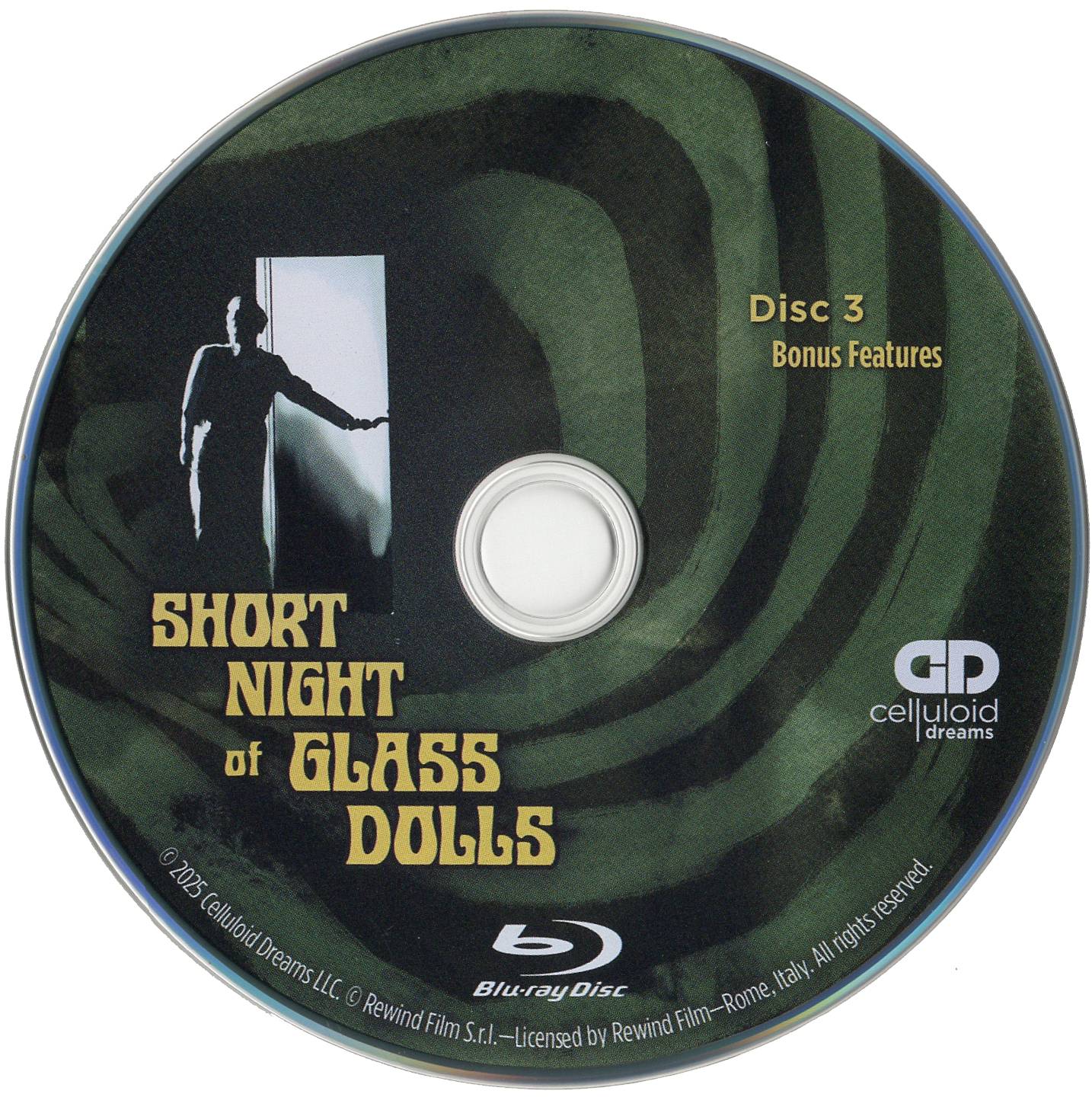
Writer/director Aldo Lado didn’t work on many gialli, but the ones in his ouevre have managed to break through the myriad releases during the ’70s. Short Night of Glass Dolls, sometimes known as Short Night of the Butterflies or its more obscure Paralyzed, is arguably Lado’s best offering. Using a particularly unique story delivery involving flashbacks from a supposedly dead man, Short Night of the Glass Dolls circumvents most of the tropes of the established giallo format of the late ’60s as defined by Bava (black gloved killers, stylistic murders, a procedural search for the killer) and instead chooses to focus on preceding factors that lead to the victimology. While this could be considered “gimmick,” the ultimate outcome is an entertaining piece of cinema that turns the whodunnit into the better question: how did it happen?
Jean Sorel stars as Gregory, a journalist working in Prague who wakes up to find that he’s been brought to a morgue. Unable to move his body in any way, he’s forced to lay on the slab as doctors examine his unnatural lack of decay and question whether he’s really dead. With nothing else to do, Gregory decides to explore the events that he remembers leading up to his predicament, and Short Night of Glass Dolls provides various vignettes throughout the film featuring those memories, often checking back in with Gregory as the doctors determine whether they should perform an autopsy. As the film progresses, both the audience and Gregory are treated to more and more information – initially Gregory’s girlfriend Mira (Barbara Bach) goes missing after a prestigious party, and as Gregory and his coworkers Jessica (Ingrid Thulin) and Jacques (Mario Adorf) rush to find her, they uncover a web of intrigue leading to a mysterious symphonic music hall called Klub 99, ultimately unveiling the true depths of the city’s disappearances before Gregory is stricken by black magic.
In terms of gialli, Short Night of Glass Dolls rarely follows protocol, and that certainly makes sense given it is Lado’s directorial debut. While it’s clear that the film dabbles in the pulpy storylines that would have been common to the “Libri Gialli” or “yellow books” of Italy’s literature, the nature of the plot is more akin to the krimi based on Edgar Wallace’s novels. As mentioned above, the film’s focus isn’t so much on the killer as it is the search for missing women in Prague, ultimately leading to a sort of political conspiracy involving gentrified old money, an international band of rich prominent businessmen, politicians, profiteers, physicians, and other high-society members. Lado’s film is deliberately paced and a very slow burn, consistently giving the viewer (and in turn, Gregory) flashes of memories involving a naked Mira in some sort of ritual to keep the viewer’s attention during the rather staid detective-work.
That pacing may be Short Night of Glass Dolls‘ most problematic element, because while the case itself features a number of twists involving deceit amongst those surrounding Gregory, much of the movie tends to be a predictable series of information excursions wherein Gregory meets with someone, divulges a bit of information, and repeats. There’s not a lot of actual murder at work, and for something that winds up becoming fantastically pulpy in its final reveal, it does tend to feel like Short Night of Glass Dolls is missing an impetus or compelling drive at times. With that said, Ennio Morricone’s score here is some of the best he’s written, amping up the tension quite a bit with its constant brooding background swells. And the gimmick itself, featuring consistent jumps back to the present as Gregory remains unable to move in the morgue, do help generate a sense of anxiety – that time is of the essence.
The film’s conclusion is, like most gialli, the best part, and in this reviewer’s opinion worth the wait. While the reveal is slightly messy and perhaps a bit rushed, the beautiful visual representation of the black magic orgy – with cinematography that intentionally dizzies and disorients the viewer with refracted light on shards of glass – is delightfully deviant, helping to set up the foregone conclusion that everyone in power is in on this madness. The final shot of Gregory regaining movement just before the autopsy’s coroner plunges a scalpel into his heart cements the paranoia of the bourgeoisie’s inherent power and disregard for human life, more focused on sapping the lower class of their health and money than helping it. While it’s easy to watch Short Night of Glass Dolls apolitically, it would be a disservice not to recognize the, frankly, ballsy commentary that Lado infuses into his directorial debut.
That is Short Night of Glass Dolls‘ ultimate achievement. Its plot may lag at times, it may lack the body count and expected/wanted symbolism of the common giallo; but Lado’s stylish visual flair and overarching political philosophy are equally deserving of lasting recognition, within a film that dares to reinvigorate a subgenre that often reiterated its own ideas.
4K UHD
Celluloid Dreams’ second release is Short Night of the Glass Dolls on 4K UHD and Blu-ray in a 4-disc collector’s edition set. The film itself is presented in 2160p with a new 4K remaster with HDR10 taken from the original 35mm camera negative and painstakingly restored. The included 64-page booklet features a pretty robust description of the restoration, including scanning details and the laborious process of color grading, as well as an explanation as to the relative “dimness” of the presentation. In all honesty, the work that went into this restoration is quite obvious during playthrough; the picture is relatively blemish-free. A medium-heavy grain scale is consistently present throughout but never feels particularly bulky except for the occasional low-light scene (particularly the bridge murder sequence). Detail is exceptional and despite a few intentional soft scenes, textures and background elements are readily apparent. The HDR10 color grading is quite good throughout, though occasional changes are apparent particularly with Sorel’s skin tones, which are sometimes overtly tanned. However, the unique cinematographic presentation of the film remains intact with the original 2.39:1 aspect ratio, and this release certainly highlights the intentional use of patterned lighting techniques and playing with contrasting light sources. Overall, this is another remarkable transfer from Celluloid Dreams that again showcases the arresting artistic merits of the giallo. Both UHD and Blu-ray also feature seamless branching for Italian and English versions.
Along with the restored feature, Celluloid Dreams has also provided the untouched positive scan as the dubbed “Grindhouse version” on the fourth disc, to be viewed so audiences can see the vast differences and corrections that were made during the restoration. This includes tons of damage and debris as well as jarring edits. Also included on the fourth disc is the Paralyzed version of the film taken from a VHS scan.
Audio includes both a DTS-HD Master Audio 1.0 mono English and Italian track. From the menu, these can be selected and the appropriate branch will be played. Both sound great, though the booklet does mention that the timing of the tracks is loose with the film due to its post-filming dubbing. Despite the mono offering, the overall presence of the soundtrack is robust and only occasional hiss can be heard. English subtitles are also included, both for the Italian audio and the English; the English is defaulted when selecting the Italian track.
There are a vast number of extras included on this release. First and foremost on both the UHD and the Blu-ray versions is the new audio commentary with critic Guido Henkel, who walks through the film identifying various contextual elements about the film’s history – including the political nature of the themes – along with background information about cast and crew. This is a great watch for all kinds of interesting tidbits and critical breakdowns of the plot, and Henkel points out some excellent highlights. Also included on both of the feature film discs is a previous audio commentary with Aldo Lado moderated by Federico Caddeo, presented in French with English subtitles. Italian, English, and “grindhouse” trailers are included (in 4K on the UHD), as well as the “Catalepsis” trailer which is an unreleased English version (the film was also released as Catalepsia in Mexico).
The third disc has the majority of features. The first is a 2015 interview, primarily with Aldo Lado and occasionally featuring Jean Sorel, which runs quite extended at over an hour and 40 minutes. It’s a sprawling interview that runs the gamut of Lado’s works, perfect for those looking to hear various anecdotes from the director himself. A new, more truncated option is a 2018 interview that provides another career retrospective of Lado’s works which runs about a half hour. This dives into his career pre-directing and then also focuses on his later directorial works, wherein Lado gives a lot of commentary on the motivations behind his films. Another new featurette sees Howard Berger exploring the historical context of Short Night of Glass Dolls in a visual essay that looks at the political implications of Eastern European fascism on the film and inspirations of Kafka’s “The Metamorphosis.”
Also included are a few featurettes produced by Freak-o-rama around the same time as the 2015 Lado interview. These encompass conversations with producer Enzo Doria, producer Dieter Geissler, singer Edda Dell’Orso, and editor Mario Morra. In total, these amount to about 90 minutes of additional interviews focusing on the film. Long lost opening credits featuring the film’s other other alternate (and original) title, Malastrana, are presented, as well as an image gallery featuring artwork, lobby cards, and stills.
Included with this special edition is a 64-page booklet featuring a new essay by Andy Marshall-Roberts in which he provides a biographical overview of Lado, including his film output. Two reprinted archival reviews of the film have also been provided, translated from their original Italian. The booklet is in full color with multiple still photographs, and concludes with an extensive depiction of the restoration work. Reversible cover artwork featuring the same image in both Italian and English adorns the case, while a new slipbox houses the case and booklet. This limited edition release also came with 10 recreated lobby cards that are beautifully crafted.
Verdict
Any fans of giallo film will absolutely want to collect this excellent edition of Short Night of Glass Dolls on 4K from Celluloid Dreams. The amount of craftsmanship and detail put into this release is easily evident from the transfer to the extras to the supplemental items, and Celluloid Dreams has already cemented their place as a boutique label to beat with only two releases under their belt.

